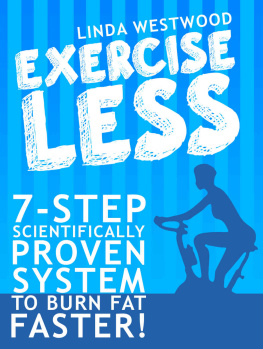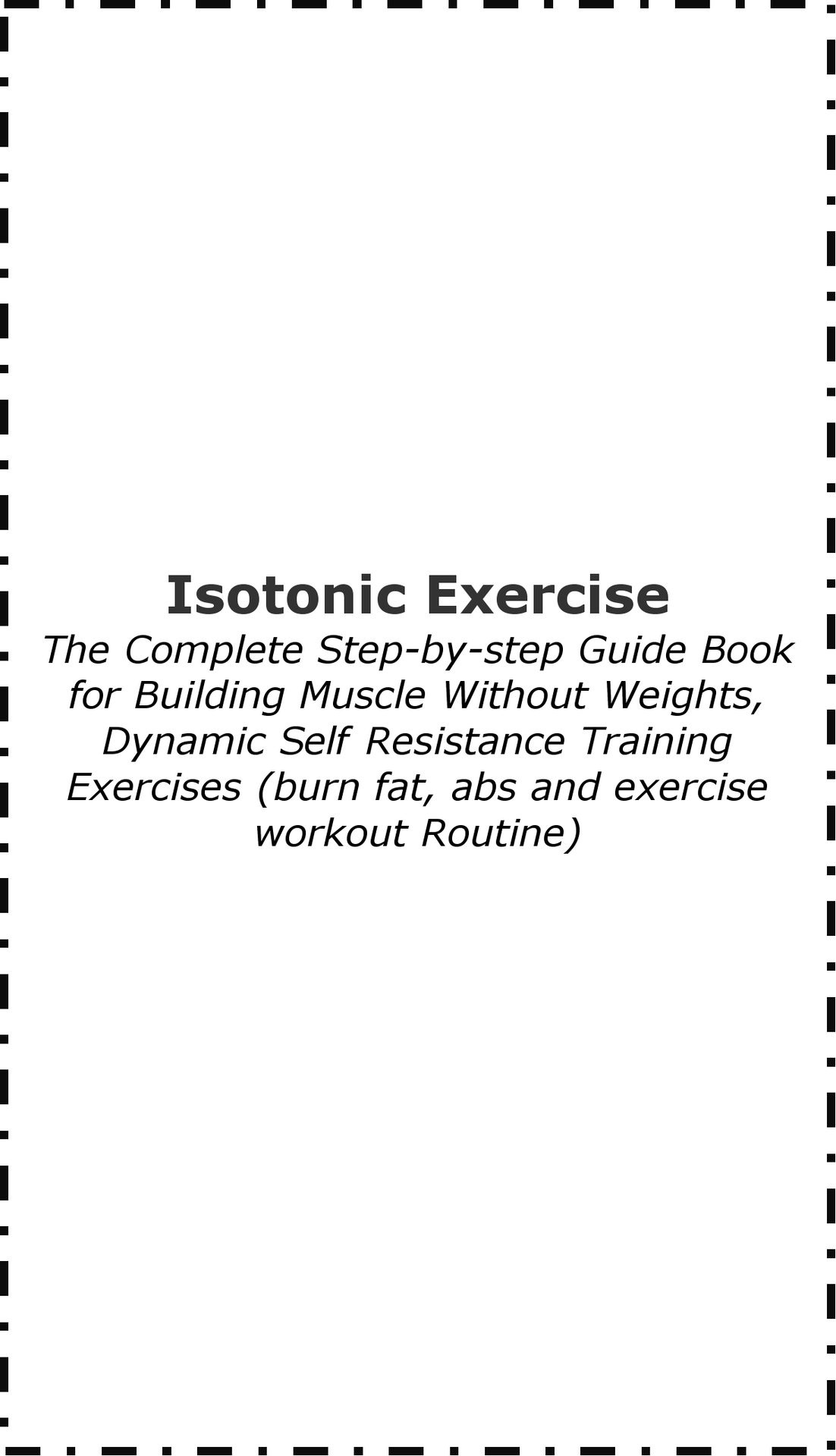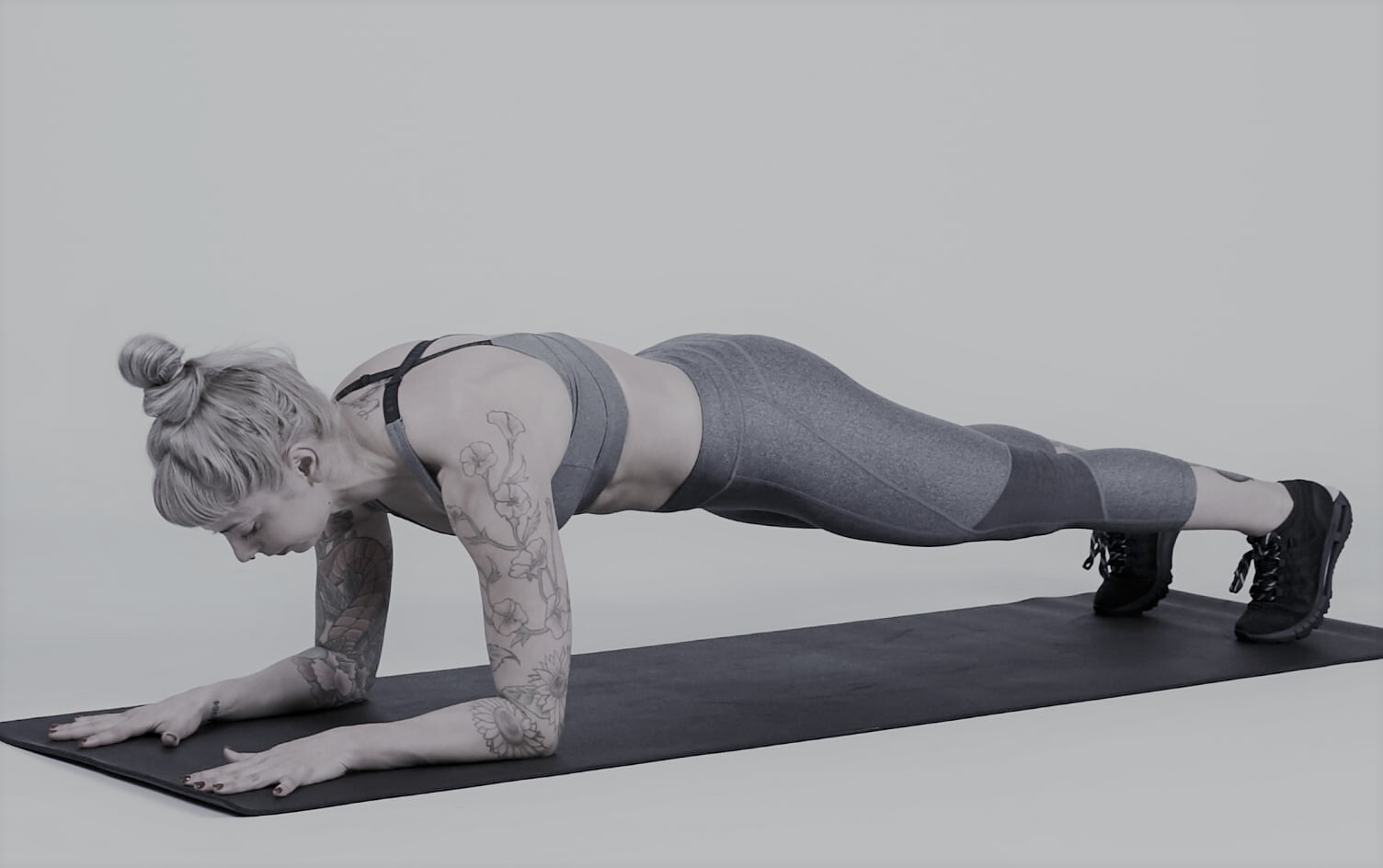Title:
Isotonic Vs. Isometric Exercise
Subtitle
The Complete Step-by-step Guide Book for Building Muscle Without Weights, Dynamic Self Resistance Training Exercises (Burn fat, abs and exercise workout Routine)
Copyright 2021 by (Robert Griffin)
All rights reserved. No part of this publication may be reproduced, distributed, or transmitted in any form or by any means, including photocopying, recording, or other electronic or mechanical methods, without the prior written permission of the publisher, except in the case of brief quotations embodied in critical reviews and certain other non-commercial uses permitted by copyright law. For permission requests, write to the publisher, addressed at the address below.
Printed in the United States of America.
TABLE OF CONTENT
INTRODUCTION
MEANING OF ISOTONIC EXERCISE
TYPES OF ISOTONIC EXERCISE
BENEFITS OF ISOTONIC EXERCISE
DIFFERENCE BETWEEN ISOMETRIC AND ISOTONIC EXERCISES
HOW TO GET STARTED WITH ISOTONIC EXERCISE
BEST MUSCLE-BUILDING ISOTONIC EXERCISES
SQUATS
DUMBBELL CURLS
WALKING LUNGES WITH WEIGHTS
PUSHUPS
BENCH PRESS
STAIRS CLIMBER
GLUTE BRIDGE
OVERHEAD HOLD
PLANK
ISOMETRIC VS ISOTONIC DIFFERENCE
VERDICT
CONCLUSION
FREQUENTLY ASKED QUESTIONS
INTRODUCTION
Isotonic training is one of the most effective ways for athletes and bodybuilders to stay in shape. In gyms and fitness clubs, it is a popular kind of exercise. You might be asking why, if it's so prevalent, you haven't heard of it. It's possible that you're already doing these workouts but aren't aware of the precise name. This is a sort of high-intensity workout that should be included in every fitness routine. Isotonic exercises, in addition to regular training, cardiovascular exercises, and other more typical kinds of exercise, provide several health advantages.
These days, losing weight isn't the only thing on people's minds. People desire to be in better condition and have a more beautiful physique. True, you won't be able to do this with only one type of exercise. A series of cardiovascular workouts, for example, may help you lose weight but not necessarily help you create a well-toned physique. It is critical to have a comprehensive workout regimen that will not only help you lose weight but also tone, maintain, and increase physical strength in order to get the body of your dreams. All of this and more may be accomplished by adding isotonic workouts into your everyday regimen.
MEANING OF ISOTONIC EXERCISE
Isotonic exercise is a type of weight-training exercise. It is conducted with free weights to train and strengthen a muscle group. Isotonic workouts are popular among people seeking to reduce weight, tone their bodies, enhance muscular power, and grow larger muscles since they focus on total fitness. Isotonic workouts include dumbbell curls and bench presses, to name a few.
It's your typical gym routines with weights moving at different rates. During the workout, the technique concentrates on the isotonic contraction of muscles. Muscle tension is produced throughout the action by using a static weight. This has an effect on the muscle, causing the muscle cells to expand and the amount of weight it can pull to rise as well. To put it another way, it is a type of muscular exercise that is used to improve muscle strength and endurance.
Isotonic comes from two Greek words: iso, which means equal, and tonos, which means equal tone.
TYPES OF ISOTONIC EXERCISE
Isotonic workouts are divided into two categories based on muscle contraction: concentric and eccentric. When the muscle shortens, concentric contraction occurs, while eccentric contraction happens when the muscle lengthens. Concentric contraction occurs when you lift weights, while eccentric contraction occurs when you put them down. In layman's terms, concentric contraction occurs when the muscle is actively functioning and manipulating the resistance. Eccentric contractions occur when the muscle is not actively functioning.
Isotonic exercise, which combines concentric and eccentric movement, has been shown to be helpful when practiced on a regular basis by researchers and scientists. In an isotonic workout, weight lifting, elliptical training, stair climbing, push-ups, and squats are examples of a perfect mix of concentric and eccentric motions.
BENEFITS OF ISOTONIC EXERCISE
Isometric training is easy on joints while yet strengthening and maintaining strength, making it excellent for people who require low-impact exercise due to injury or arthritis. Isometric training is also a wonderful option for getting a workout without needing to go outside or to the gym if you have constrained space at home. Isometric workouts increase muscular mass, strength, and bone density while also lowering cholesterol and improving digestion. Isometric exercise, like all types of exercise, helps to decrease blood pressure. Individuals with high blood pressure, on the other hand, should proceed with caution and consult their doctors before starting any new fitness regimen.
Any kind of exercise will give major health advantages. The greatest type of exercise is one that you love and can perform on a regular basis, and those who combine a range of activities get the most advantages. Based on your present health, goals, and personal preferences, choose the best forms of exercise for you.
Those seeking to become in shape and maintain their fitness level can benefit from isotonic training. People frequently mistake the two; as a result, we'll go through the differences between the two types of exercise later. In the past, research have shown that an effective long-term fitness regimen must include an isotonic workout. The nicest thing about these workouts is that they don't require any special equipment and can be done anywhere and at any time. There's no reason to skip a workout just because you're on vacation or visiting family.
You should be able to get started with a few isotonic motions. Isotonic training promotes bone, muscle, and heart health in addition to getting you in shape. The following are some of the advantages of isotonic training:





















